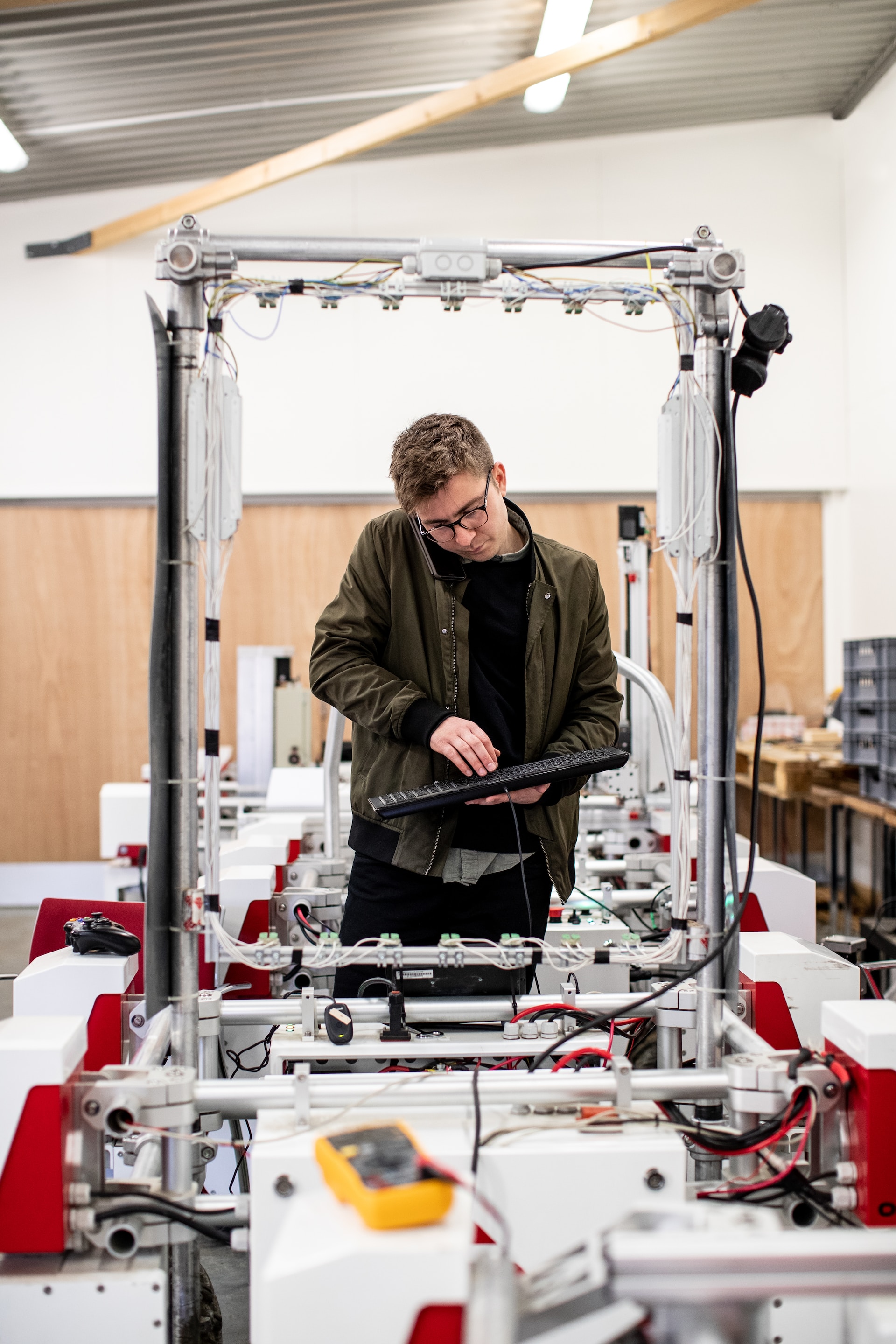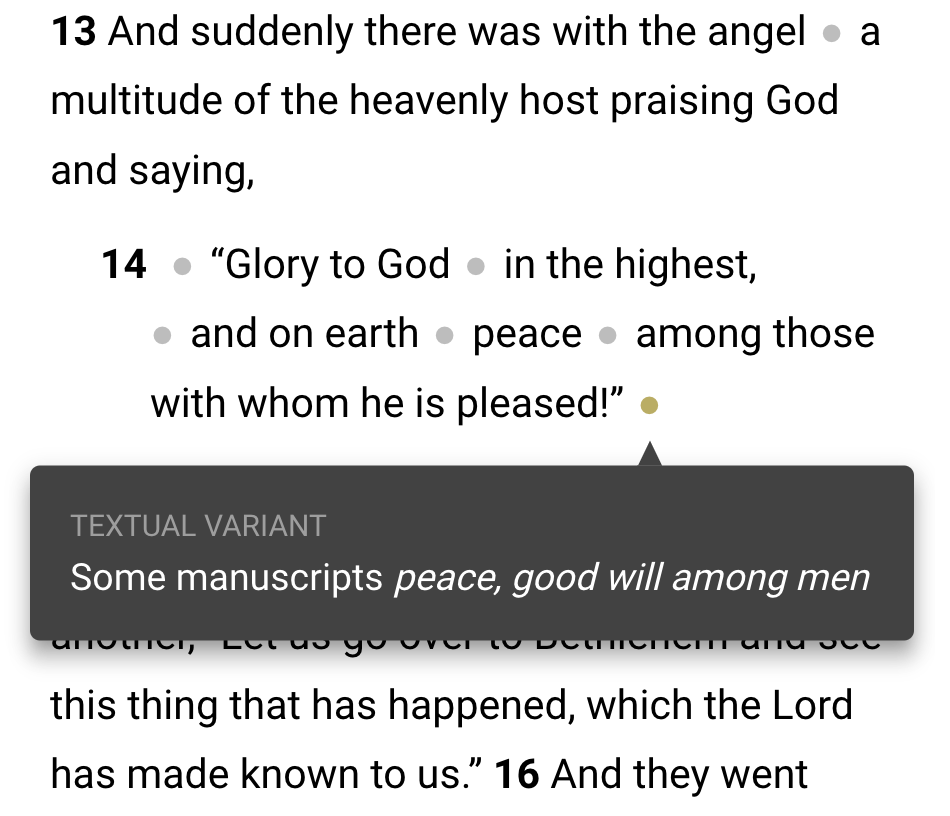Lesson 1 | Cross-References
About This Course
Training is not a flashy word. It typically does not get folks excited. Unless…it is training that enables you to use powerful tools.






You only have three options with these sorts of tools: leave them to others, break stuff, or get trained.
The same goes for the Bible study aids we have access to today. (1) You can leave Bible translation footnotes for others to figure out, simply be glad that others know how to find the definitions of Greek words, and use Bible searches only to find verses on a topic. Or (2), you can dive in and think you know a whole lot of things that you do not actually know. Or (3), you can learn.
For example, consider an ESV footnote in Luke 2:14.

What are those dots, why do they come in two colors, and what is the meaning of the black box they bring up when clicked? What is “textual variant” supposed to mean? Which “manuscripts” is this talking about? (And for that matter, what is a “manuscript”?!) Is this footnote supposed to help me understand this verse better? How so? Is this an alternative translation, or something else? Is “peace, good will among men” a possible replacement of some or all of the verse? Or is it an addition? Why did the ESV make this a footnote and not include it in the actual text? Since almost every verse is different between different Bible versions, why is there not a footnote for each one? Do footnotes like this give us reasons not to trust the Bible? Are footnotes a part of God’s inspired Word—that is, are they also breathed out by God and “profitable for teaching, for reproof, for correction, and for training in righteousness” (2Tim 3:16)? Once I understand what this footnote is saying, am I done, or is it prompting me to do something?
If you can resonate with any of these questions, you are in the right place. This course is for you.
Course Structure and Purpose
The first half of this course will examine Bible features. Our study of these features will then serve as a foundation for the second half of the course: searching our Bibles. Altogether, the goal is to move a person from reading his/her Bible, to knowing how to use Bible aids to study it.
Okay, let’s get on with it!